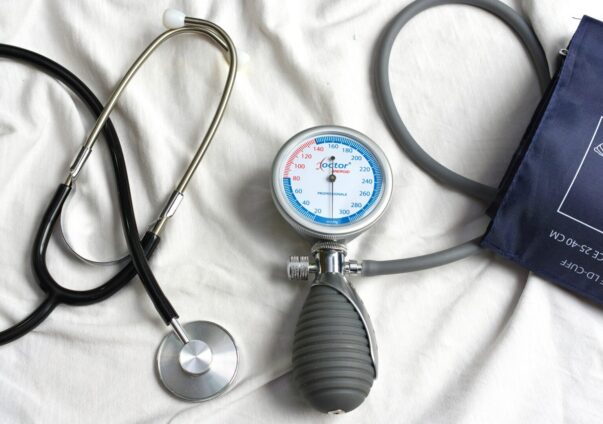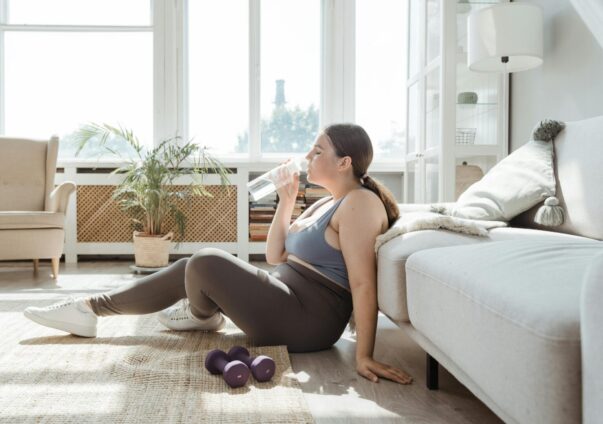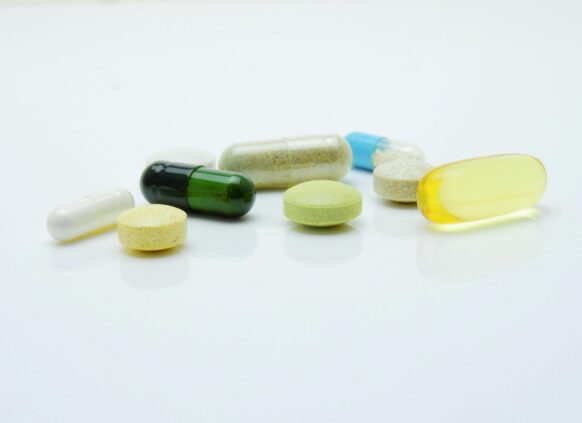
How to lower blood pressure
If you’re living with high blood pressure and looking for advice on how to lower blood pressure, there are different ways to bring it down – including medication, lifestyle changes, and weight loss.
In this guide, we’ll look at what works, how losing weight can help, and how a hypertension diagnosis can be the start of wider health improvements.
If your BMI is over 35, you may be eligible for Oviva’s personalised weight loss programme, with support from dietitians, doctors and coaches.
Key Takeaways
- High blood pressure can run in families, but lifestyle plays a big role.
- Diet, movement, medication, and other home-based changes can all help lower it.
- Oviva offers personalised support to help you lose weight and build healthy habits that last.
What is high blood pressure?
Doctors use the term high blood pressure (or hypertension) when your readings are consistently above a certain level.
Hypertension can increase your risk of cardiovascular diseases, including strokes and heart attacks.
Blood pressure is presented as the systolic reading, followed by the diastolic reading:
- Systolic: the pressure when your heart beats.
- Diastolic: the pressure between beats.
If you’re under the age of 80, you’re classed as having high blood pressure if your reading is:
- 140/90 or higher when checked in a clinical setting
- 135/85 or higher when checked at home
If you’re over the age of 80, you’re classed as having high blood pressure if your reading is:
- 150/90 or higher when checked in a clinical setting
- 145/85 or higher when checked at home
All types of high blood pressure need some form of treatment. Regular check-ups with your GP can help you keep track of your readings and find the right way to manage them.

What does healthy blood pressure look like?
A healthy blood pressure is usually between 90/60 and 120/80 mmHg. This means your heart and blood vessels are working well without being under too much pressure.
If your readings are higher than this, it’s a good idea to speak to a healthcare professional. They can help you monitor your blood pressure and find the right way to manage it.
Risk factors for high blood pressure
Some people are more likely to develop high blood pressure due to their genes, but lifestyle factors also play a big role.
The good news is, making small changes to your daily habits can help bring your blood pressure down.
Common risk factors include:
- Excess weight or obesity
- Smoking
- Drinking too much alcohol
- Diabetes
- High cholesterol
- Not getting enough exercise
- Ongoing stress
- Ethnicity – your risk is higher if you’re from a Black African, Black Caribbean or South Asian background
Addressing these factors – especially through changes to your diet, activity levels and overall lifestyle – can make a real difference to your health.

Can natural remedies lower blood pressure?
Some natural remedies may offer mild benefits for blood pressure, but there isn’t strong medical evidence to support them on their own. The most effective way to lower blood pressure is through a combination of lifestyle changes and, if needed, medication.
Lifestyle changes that can help:
- Quit smoking – Stopping smoking supports heart health and helps lower blood pressure.
- Drink less alcohol – Cutting back or avoiding alcohol can make a big difference.
- Eat well and manage your weight – A balanced diet and gradual weight loss can help bring your blood pressure down.
- Move more – Regular activity, even short walks, can support a healthy heart.
- Find ways to manage stress – This might mean taking time for things you enjoy, trying mindfulness or meditation, joining a beginner yoga class, or speaking to a professional.
- Sleep well – Aim for 7–9 hours of nightly. If that’s not doable, try healthy sleep habits like no phone for an hour before bed, or going to bed 15 minutes earlier than normal.
Important: Always consult your GP before taking natural remedies, as they may interact with blood pressure medication.

How to quickly lower blood pressure
If your blood pressure is high, there are a few simple steps that may help bring it down in the moment:
- Take slow, deep breaths to help calm your nervous system.
- Make sure you’ve taken any prescribed blood pressure medication.
- Drink a small glass of water.
- Try a short walk or some gentle stretches, if you feel well enough.
These strategies may help manage blood pressure over time, but they aren’t a substitute for medical care if something feels wrong.
Get help straight away if you notice any of the following:
These could be signs of a hypertensive crisis, heart attack, or stroke. If you’re unsure, call 111 for advice. If it feels like an emergency, call 999.
- Chest pain
- Breathlessness
- Nausea or vomiting
- Dizziness
- Vision or speech problems

Lower blood pressure with diet
What you eat can make a big difference to your blood pressure. A diet rich in vegetables, fruit, whole grains and healthy fats – like those in nuts, seeds, plant oils and oily fish – can help bring your numbers down.
Key nutrients to focus on:
- Potassium – found in bananas, apricots and tomatoes, potassium helps balance the effects of salt.
- Less sodium (salt) – cutting down on salt can prevent blood pressure from rising.
It also helps to limit:
- Red and processed meats
- Full-fat dairy
- Sugary foods and drinks
Exercise to reduce high blood pressure
Regular exercise is an effective way to manage high blood pressure. In some cases, it can lower your readings by as much as 10 mmHg (systolic) and 8 mmHg (diastolic).
Exercises that support heart health include:
- Aerobic activities – walking, cycling, and swimming
- Everyday movement – like gardening or housework
- Isometric exercises – such as wall squats, glute bridges and handgrip holds
One study found that isometric exercises may lower blood pressure more than other forms of exercise, including aerobic, resistance and high-intensity training.
Note: Avoid strenuous activity without medical advice if your blood pressure is above 160/110 mmHg.

Lower blood pressure by losing weight
Carrying extra weight can increase your risk of hypertension.
Losing just 5 kg can lead to noticeable improvements, and losing 10% of your body weight can reduce systolic blood pressure by around 15 mmHg.
Oviva helps you reach your weight loss goals with personalised weight loss support through:
- Meal tracking – simply take photos of your meals to log them.
- Tailored goals – work with your coach to set realistic, achievable targets.
- Motivating education – learn about food, movement and lifestyle habits.
- Medication support – if you’re eligible, you could access NHS-funded weight loss medication delivered to your door.
Oviva offers a supportive programme that combines professional guidance, tailored lifestyle support, and a user-friendly app to help you reach your weight loss goals.
Some medications, like semaglutide (the active ingredient in Wegovy), have also been shown to lower blood pressure. In one study, people taking semaglutide saw average drops of:
- 7.4 mmHg with a 5 mg dose
- 10.6 mmHg with a 10 mg dose (after 36 weeks)
You may be eligible for Oviva if your BMI is over 35 and you’ve been diagnosed with hypertension.
It’s easy to see if you’re eligible – just ask your GP! If you are, they can make a quick and easy referral.
Not sure how to start the conversation with your doctor? Get our info pack!
Medication for high blood pressure: yes or no?
If your blood pressure stays above 140/90 mmHg, your GP may recommend medication alongside lifestyle changes.
Together, you and your doctor will agree on a blood pressure target that works for you, based on your age, health and how you respond to treatment.
Making changes to your eating habits, activity levels and weight can help improve your readings – and may even reduce your need for medication over time.
Oviva offers personalised, NHS-funded support to help you build long-term habits that lower blood pressure and improve overall health.



